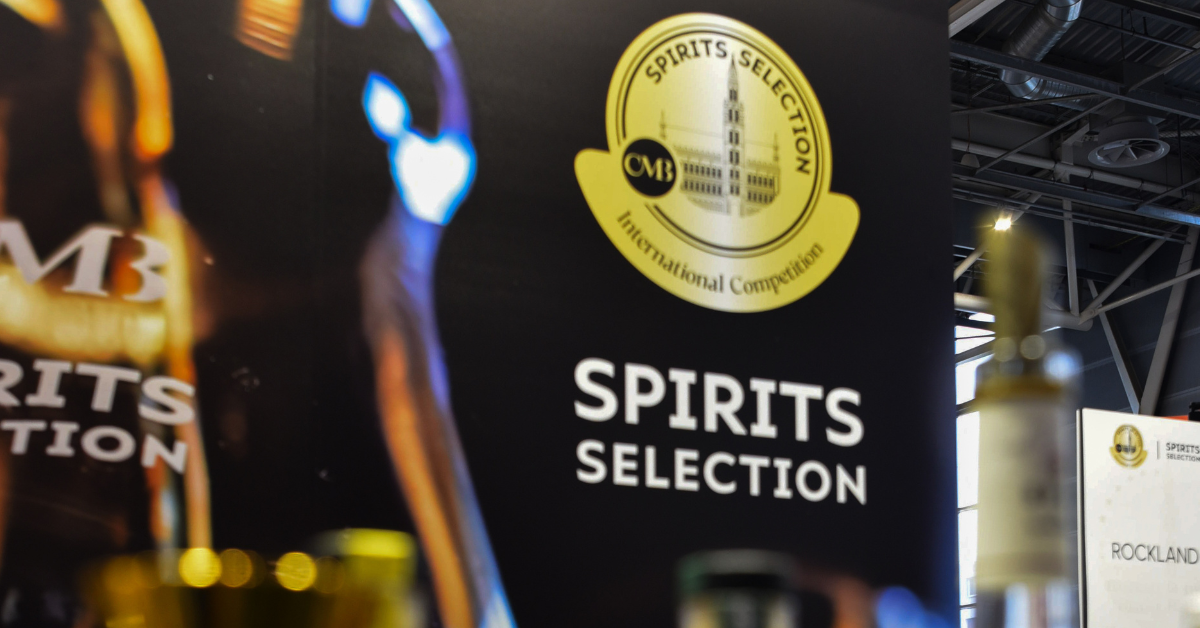New Category at the Spirits Selection by CMB: German Whisky

For its 27th edition, taking place in early September in Jalisco, Mexico, Spirits Selection by CMB will introduce a new competition category: German Whisky.
Germany lacks a unified historical whisky tradition, with production often developing from adjacent spirits sectors. However, the country has long benefited from a comprehensive technical ecosystem for spirit production — including advanced malting expertise, a well-established still manufacturing industry, and a cooperage tradition rooted in wine and brandy making. Many of today’s German whisky producers originally operated as fruit distilleries (Obstbrennereien), Korn makers (see page 30), or breweries. Only a minority are dedicated exclusively to whisky production.
A modern German whisky identity began to emerge in the 1990s and early 2000s, with the founding of purpose-built distilleries such as Slyrs (1999) and later St. Kilian (2012). The establishment of the Verband Deutscher Whiskybrenner (German Whisky Distillers Association) has supported public awareness and category cohesion through initiatives such as the Tag des Deutschen Whiskys, the Festival des Deutschen Whiskys, and the German Whisky Award. Despite its youth, the German whisky scene has grown rapidly, with over 350 producers now engaging in whisky production[ii].

Geographical Context
Whisky is produced across all regions of Germany, including Bavaria, Baden–Württemberg, Hesse, Thuringia, Saxony, and North Rhine–Westphalia. There is no legally defined geographical indication for German whisky, and no dominant region or terroir-driven sub-identity has emerged[iii].
Climatic conditions vary significantly, from humid maritime in the north to more continental environments in the south, contributing to diverse maturation outcomes. Producers are free to experiment with grain selection, still types, fermentation methods, and cask profiles, resulting in a highly eclectic national style.
Legal Classification
There is no protected national definition for “German Whisky” beyond compliance with the general requirements of EU Regulation (EC) No. 110/2008 and its successor under Regulation (EU) 2019/787. These stipulate that whisky must be:
- Distilled from cereal grains,
- Distilled to no more than 94.8% ABV,
- Matured for a minimum of three years in wooden casks.
Common styles marketed by German producers include:
- Single Malt Whisky (100% malted barley, single distillery),
- Grain Whisky (mixed cereals, often maize, wheat, or rye),
- Blended Whisky (malt and grain components from different origins),
- Rye Whisky (produced from rye grain, often in high proportion but not defined by a fixed minimum content).
Producers are often grouped by origin and equipment type[iv]:
- Former fruit distilleries – e.g. Birkenhof (Fading Hill), Brigantia (Steinhauser). These represent a significant portion of German whisky producers and often ferment on solids without lautering
- Traditional Korn distilleries – e.g. Schraml (Stonewood), Schlitzer, Finch. These also commonly skip lautering and frequently produce grain whiskies.
- Breweries-turned-distillers – e.g. The Nine Springs, Farny. These producers almost always lauter the mash, as lautering is essential in beer production.
- Dedicated whisky distilleries – e.g. Slyrs, St. Kilian, Hellinger. Most apply lautering, with a few exceptions, and focus almost exclusively on malt whisky.
Each group brings its own fermentation practices, distillation apparatus, and stylistic preferences. Types 1 and 2 are also more likely to produce grain whisky, while Types 3 and 4 generally produce single malts. One notable technical divide is the use (or omission) of lautering[v].
Production Specificities
German whisky production is characterised by technical diversity and experimental freedom.
- Raw Material: German whisky production benefits from the country’s deep brewing heritage and well-developed malting industry. Most malted barley is sourced domestically, with consistent quality provided by longstanding malt houses serving both brewers and distillers. In addition to standard pale malts, many producers frequently use specialty malts; most notably chocolate malt, a heavily kilned grain that imparts notes of roasted grain, cocoa, coffee, and dark toast[vi]. Its use, often between 2% and 6% of the grist, adds richness and aromatic depth to many German single malts. Other grains such as maize, rye, wheat, spelt, and emmer are also used, particularly in grain or mixed mashbills. Peated malt, typically imported, is employed by some distillers to create peated expressions. A growing number of producers explore regional identity through the use of local or heritage grain varieties.
- Fermentation: Lautering is applied inconsistently across producer types. Type 3 and 4 distilleries (brewery-based and purpose-built) typically use lautered wort, yielding cleaner, more predictable spirits. Type 1 and 2 distilleries (fruit and Korn origins) often ferment on solids, which can result in pronounced fruity, spicy, or estery character reminiscent of fruit brandy. Some producers outsource mashing and lautering to professional breweries to ensure greater consistency. Fermentation vessels include stainless steel and wooden vats. Fermentation durations range from 48 to over 100 hours. Yeast selection includes distiller’s yeast, brewer’s yeast, and, in some cases, wine yeasts to enhance aromatic diversity[vii].
- Distillation: Distillation methods in Germany vary widely depending on the producer’s origin. While some use traditional copper pot stills, many operate hybrid systems adapted from fruit brandy production[viii]. These include stills with rectifying plates, side columns, or dephlegmators. Still design influences purity, texture, and aromatic profile, contributing to significant stylistic variation. Germany also benefits from a well-established still manufacturing industry, which supports customisation and innovation across distillery types. Producers with roots in fruit brandy distillation often apply very tight head and tail cuts, resulting in clean, light, and aromatically refined distillates. This approach contrasts with broader cuts used in other whisky traditions and reflects a technical emphasis on precision and ester preservation[ix]. The resulting spirits frequently exhibit elevated fruit and floral notes, especially when paired with non-lautered fermentations or extended fermentation times.
- Maturation: Whisky must mature for a minimum of three years in wooden casks. German producers use a wide variety of cask types, including ex-bourbon, sherry, local wine, fruit spirit, and even beer barrels. The use of national cooperage and barrels previously holding local products imparts distinctive character and highlights the influence of domestic beverage traditions. Maturation warehouses range from traditional vaulted cellars to modern temperature-controlled facilities. Age statements are commonly in the 3–8 years range, though older releases are becoming more frequent.
Key Points
- Germany has over 350 active whisky producers, though only a minority specialize exclusively in whisky.
- There is no protected geographical indication for German whisky; production complies with general EU Regulation (2019/787).
- German whisky reflects a diverse range of production origins, including fruit brandy distilleries, Korn makers, breweries, and purpose-built whisky operations.
- Lautering practices vary by producer type, with fermentation on solids contributing to fruitier, more estery spirit profiles.
- Equipment includes traditional pot stills and German hybrid stills; with many distilleries using apparatus derived from fruit brandy production.
- Germany’s still and malt industries support high-quality whisky production, complemented by a national cooperage tradition.
- Chocolate malt is widely used (typically 2–6% of the grist) to impart roasted, cocoa-like depth to many German single malts.
- Maturation casks are diverse, often sourced from domestic wine, beer, and fruit spirit traditions.
- Leading producers include Slyrs, St. Kilian, Stonewood, Birkenhof, Brigantia, The Nine Springs, and Storck.
Tasting German Whisky
Tasting German whisky is an exercise in navigating variety! There is no fixed style, no dominant tradition, only a spectrum shaped by diverse origins, experimental methods, and independent philosophies. While many producers draw inspiration from Scotch, the results are often unmistakably German: precise, playful, and unconstrained by convention.
Malt whiskies dominate the category and typically display a broad aromatic palette. Vanilla, banana, pear, and caramel are frequently encountered, supported by grain, oak, and sweet spice. Yet beyond these familiar notes lie traces of fruit brandy, rustic cereal, pine resin, or toasted nut, echoes of production histories rooted in Obstler, Korn, and beer. The use of non-lautered mash in many distilleries can lend a round, estery fruit character that differs markedly from classic malt profiles.
There is no single way to judge German whisky. Rather, its strength lies in its eclecticism. Professionals are encouraged to taste with openness and curiosity, acknowledging that German whisky is not trying to imitate, but rather to interpret.
TYPICAL ORGANOLEPTIC PROFILE – German Single Malt
- Appearance: Pale gold to deep amber, with richer copper tones in aged expressions due to varied cask influence and continental maturation.
- Nose: Dominated by banana, pear, and baked apple, with layered notes of vanilla, caramel, sweet spices (cinnamon, cardamom), floral hints, and subtle oak or smoke.
- Palate: Sweet and fruity, with banana, vanilla, caramel, and dried fruits. Balanced by grain, spice, light nuttiness, and occasional smoke or estery notes.
- Finish: Medium to full-bodied, smooth and slightly oily, with well-integrated alcohol and a warm, persistent finish.
Author: Ulric Nijs, Spirits Selection by CMB’s Director
[i] Zarnkow, M. & Back, W. (2006). Brewing and Distilling in Central Europe. Brauwelt International.
[ii] Whisky Guide Deutschland 2025. ISBN: 978-3-7473-0075-4.
[iii] “German Whisky and Regional Identity,” in European Spirits Geography, ed. N. Wüthrich, 2022
[iv] Classification provided directly by the Verband Deutscher Whiskybrenner (German Whisky Distillers Association), correspondence 2025
[v] Barth, H. (2021). Technologie der Destillation. Behr’s Verlag.
[vi] Stewart, G. (2020). “The Use of Specialty Malts in Whisky Production,” Journal of Distilling Science.
[vii] Watson, E., & Hill, M. (2024). The potential for Scotch malt whisky flavour diversification by yeast. FEMS Yeast Research, 24(1).
[viii] Brand, R. (2023). Neue Destillationstechniken im deutschsprachigen Raum. Ulmer Verlag.
[ix] Beuchel, M. (2022). “Head and Tail Cut Practices in German Craft Distilleries,” European Distilling Journal.


